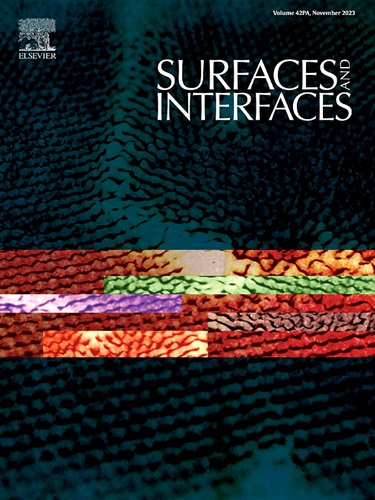Artificial oxyanion reservoir accelerates oriented ionic migration in MXene-based synaptic memristor for neuromorphic computing
IF 5.7
2区 材料科学
Q2 CHEMISTRY, PHYSICAL
引用次数: 0
Abstract
Application of two-dimensional MXenes (Ti3C2Tx)-based memristors in neuromorphic computing is restricted due to the unsatisfied power consumption, consistency and tolerance, and the indistinct resistive switching mechanism. Herein, an elaborately designed Al/Ti3C2Tx/SnO2/ITO memristor to alleviate the above issues, and the device exhibits a boosted switching ratio of about 103, excellent durability over 500 cycles, and a switching voltage of <0.6 V, and shows good retention characteristics. Theoretical analysis manifests that the insertion of the SnO2 layer promotes the formation and rupture of conductive filaments as the optimized local electric field and the concentration gradient of oxyanions tremendously favors oriented ionic migration and reduces the transition voltage. This work not only provides a feasible and effective way to enhance the memristive performance of two-dimensional materials but also further demonstrates the advantages of two-dimensional materials in neural network computing architectures.

求助全文
约1分钟内获得全文
求助全文
来源期刊

Surfaces and Interfaces
Chemistry-General Chemistry
CiteScore
8.50
自引率
6.50%
发文量
753
审稿时长
35 days
期刊介绍:
The aim of the journal is to provide a respectful outlet for ''sound science'' papers in all research areas on surfaces and interfaces. We define sound science papers as papers that describe new and well-executed research, but that do not necessarily provide brand new insights or are merely a description of research results.
Surfaces and Interfaces publishes research papers in all fields of surface science which may not always find the right home on first submission to our Elsevier sister journals (Applied Surface, Surface and Coatings Technology, Thin Solid Films)
 求助内容:
求助内容: 应助结果提醒方式:
应助结果提醒方式:


